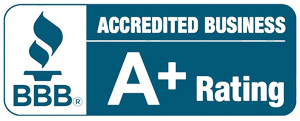
WEST PALM BEACH, FL – In an era where digital shopping is the norm, having a basic online presence is no longer enough. An e-commerce website must be strategically designed to turn casual visitors into paying customers. Whether you’re a retailer selling niche products or a developer building for clients, every element of your site must serve the goal of increasing conversions and offering a seamless shopping experience.
This guide outlines the essential features and principles that drive online sales, helping you create an ecommerce platform that delivers real results.
Clean, Responsive Web Design
A strong first impression sets the tone for a user’s entire shopping journey. Clean, responsive design ensures that your site looks and functions well on any device—desktop, tablet, or mobile.
Key Design Principles:
- Clear visual hierarchy for easy navigation
- Mobile-friendly layouts with adaptable menus
- Consistent branding elements across all pages
- Prominent display of offers and categories on the homepage
Effective design should lead users naturally toward product discovery and action without unnecessary distractions.
High-Impact Product Pages
Your product pages play a crucial role in driving purchases. They should provide all the necessary information and visuals to support the customer’s decision-making process.
Essentials of a Product Page:
- Quality Images: Use multiple angles, close-ups, and context shots
- Detailed Descriptions: Include size, features, material, use cases, and benefits
- SEO Optimisation: Use relevant keywords in titles, descriptions, headings, and image alt text
- Prominent CTAs: Ensure action buttons like “Add to Cart” are visible and easy to interact with
The goal is to inform, reassure, and convert—without overwhelming the user with excessive text or clutter.
Streamlined Shopping Cart Experience
A seamless cart and checkout process can significantly reduce cart abandonment rates. Keep the journey from cart to confirmation intuitive and minimal.
Core Cart Features:
- Option for guest checkout
- Easy editing of cart items
- Clear pricing, including taxes and shipping
- Visual checkout progress bar
- Save cart for later or across sessions
Make sure the cart is accessible from every page, and that transitions to checkout are quick and clear.
Flexible, Secure Payment Options
Offering multiple secure payment methods improves customer trust and increases the likelihood of completing a purchase. Buyers expect flexibility and transparency during the payment stage.
Payment Considerations:
- Support for various card payments
Compatibility with localised or digital wallet options - Easy application of discount codes or store credits
- Confirmation page with a clear summary of the transaction
- Secure encryption protocols to protect customer data
Customers need to feel confident that their personal and financial information is safe at every step.
Build Confidence with User Feedback
Shoppers want to hear from others before making a purchase. Incorporating honest reviews and ratings on product pages can greatly influence buying behaviour.
How to Use Feedback Effectively:
- Display average star ratings with a breakdown
- Include customer comments highlighting product usage
- Filter options for reviews by rating or date
- Highlight frequently mentioned pros and cons
Social proof reduces hesitation, answers questions before they’re asked, and increases trust in your products.
Conversion Boosters: Urgency & Personalisation
Encouraging users to act quickly or return later can drive repeat traffic and increased sales.
Proven Techniques:
- Countdown timers for limited-time offers
- Low stock alerts to create urgency
- Wishlist or “save for later” options
- Personalised recommendations based on browsing history
- Reminder emails for abandoned carts or saved items
These subtle nudges improve engagement and push hesitant buyers toward completing their purchase.
Prioritise Website Speed & Performance
Fast-loading pages enhance user experience and improve your ranking in search engines. In e-commerce, even a one-second delay can result in lost sales.
Speed Optimisation Tips:
- Compress and optimise images
- Use browser caching and efficient hosting
- Minify HTML, CSS, and JavaScript
- Avoid unnecessary animations or heavy plugins
- Load critical content first and use lazy loading for the rest
A swift, responsive site builds credibility and keeps potential buyers engaged longer.
Mobile-First Approach
With a growing number of customers shopping on their phones, a mobile-first design is not optional — it’s essential.
Mobile Experience Guidelines:
- Simplified navigation with large, easy-to-tap buttons
- Streamlined checkout process with autofill options
- Sticky “Buy” or “Add to Cart” buttons for long pages
- Optimised forms with minimal fields
- Fast page loading even on slower networks
Mobile optimisation also benefits your search engine visibility, making it a win for both UX and SEO.
Intuitive Navigation & Smart Search
If users can’t find what they’re looking for quickly, they’re unlikely to stick around. A well-structured navigation system improves discoverability and helps users explore more products.
Navigation Essentials:
- Logical category hierarchy
- Mega menus or dropdowns for large inventories
- On-site search bar with predictive suggestions
- Filter and sort options on category pages
- Breadcrumbs for easier browsing history
Intuitive navigation reduces bounce rates and improves both customer satisfaction and conversion rates.
Establishing Trust with Clear Policies & Support
Trust plays a vital role in online purchasing decisions. Providing transparency and support makes customers feel confident shopping with you.
Trust Signals to Include:
- Visible return and refund policies
- Secure checkout symbols or trust badges
- Customer service contact info (chat, phone, email)
- Frequently Asked Questions (FAQ) section
- Order tracking features
The easier it is for users to find help or get answers, the more likely they are to follow through with a purchase.
Search Engine Optimisation (SEO) for E-Commerce
Driving organic traffic to your site is essential for long-term growth. Search engines need to understand your site structure and content to rank it effectively.
E-Commerce SEO Checklist:
- Optimise titles, meta descriptions, and headings for product and category pages
- Use keyword-rich, descriptive URLs
- Implement structured data for products and reviews
- Use internal linking between related products and categories
- Keep a regularly updated blog for fresh content and backlinks
Strong SEO helps ensure your products reach the right audience without relying entirely on paid ads.
Conclusion: Build with Conversion in Mind
Your e-commerce website is more than just a digital storefront—it’s your most powerful sales tool. Every element, from product pages to checkout flow, should be built with purpose, prioritising usability, clarity, and trust.
When all these components work together, you don’t just attract visitors—you convert them into loyal customers.
If you’re looking to build or enhance your e-commerce website, our team at Searchen Networks specialises in developing high-performance, sales-driven online stores tailored to your business goals.
Frequently Asked Questions
What are the core features of a successful e-commerce website?
Core features include responsive design, well-optimised product pages, a smooth checkout process, multiple payment options, and trust signals like reviews and support.
How do I reduce cart abandonment?
Simplify the checkout process, allow guest checkout, provide upfront pricing (including shipping), and display trust and security badges clearly.
Is mobile optimisation really that important?
Yes. With more users shopping via mobile, your site must be fast, easy to navigate, and mobile-friendly to stay competitive and reduce bounce rates.
How can I improve trust on my site?
Add clear return policies, customer reviews, visible contact information, and secure payment assurance throughout your site.
What role does SEO play in e-commerce?
SEO helps bring organic traffic to your site by improving visibility in search engines. Well-optimised product and category pages are essential for long-term success.










